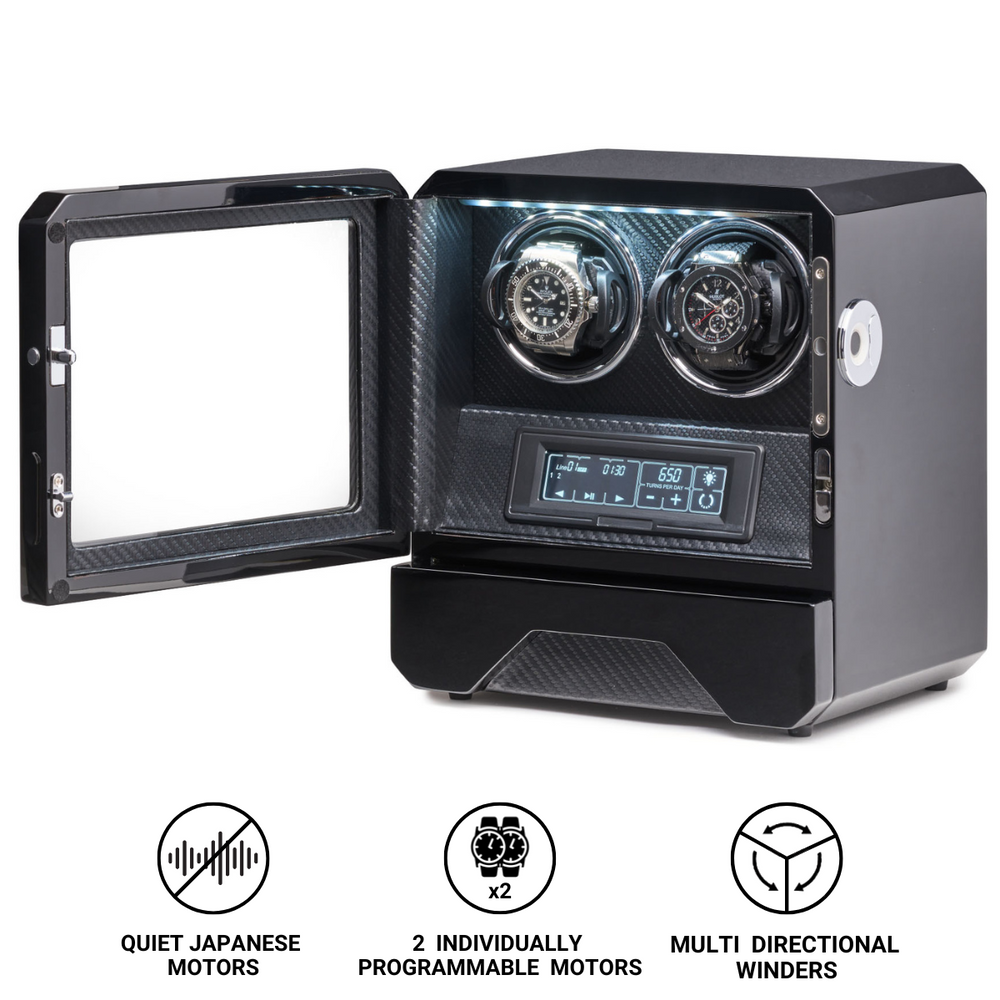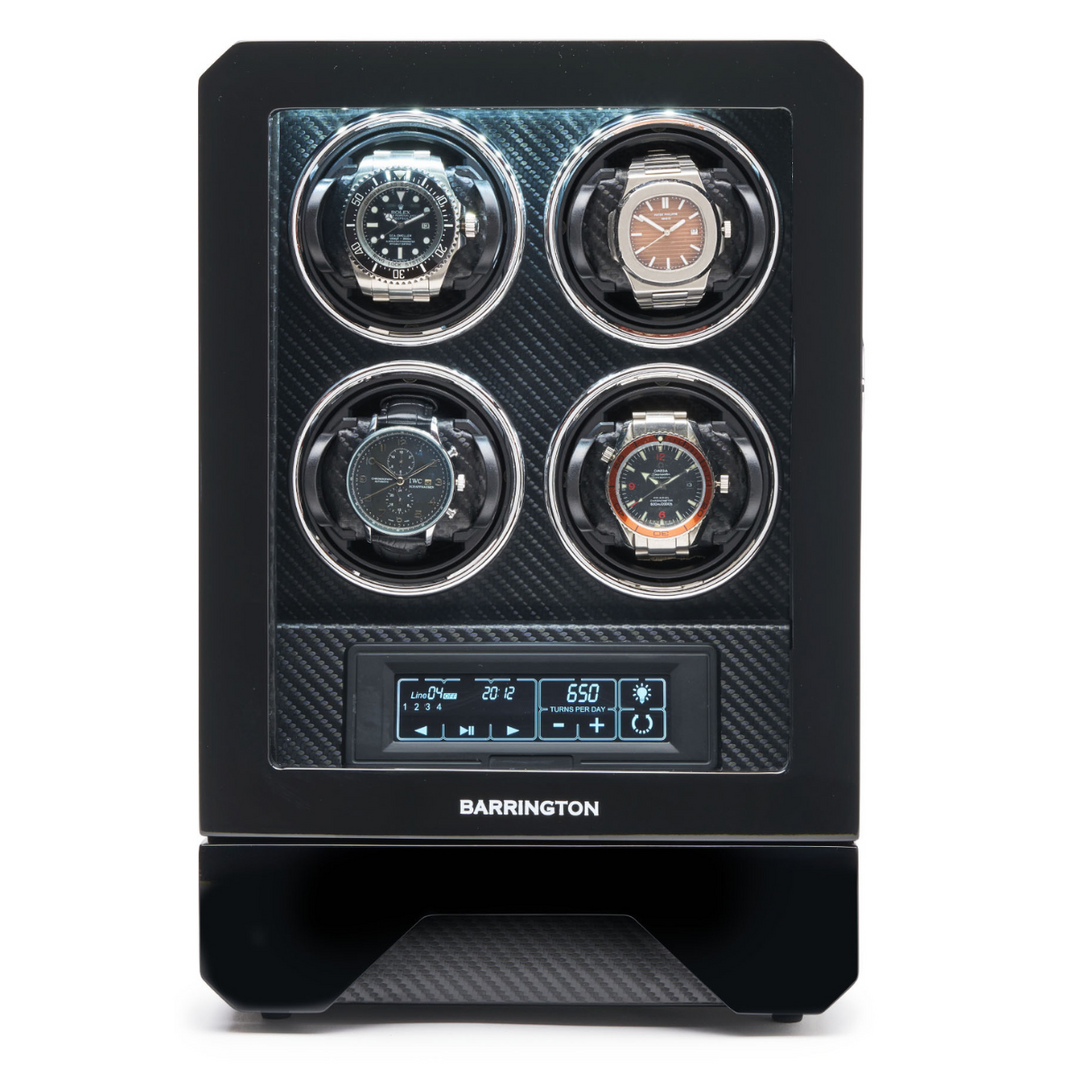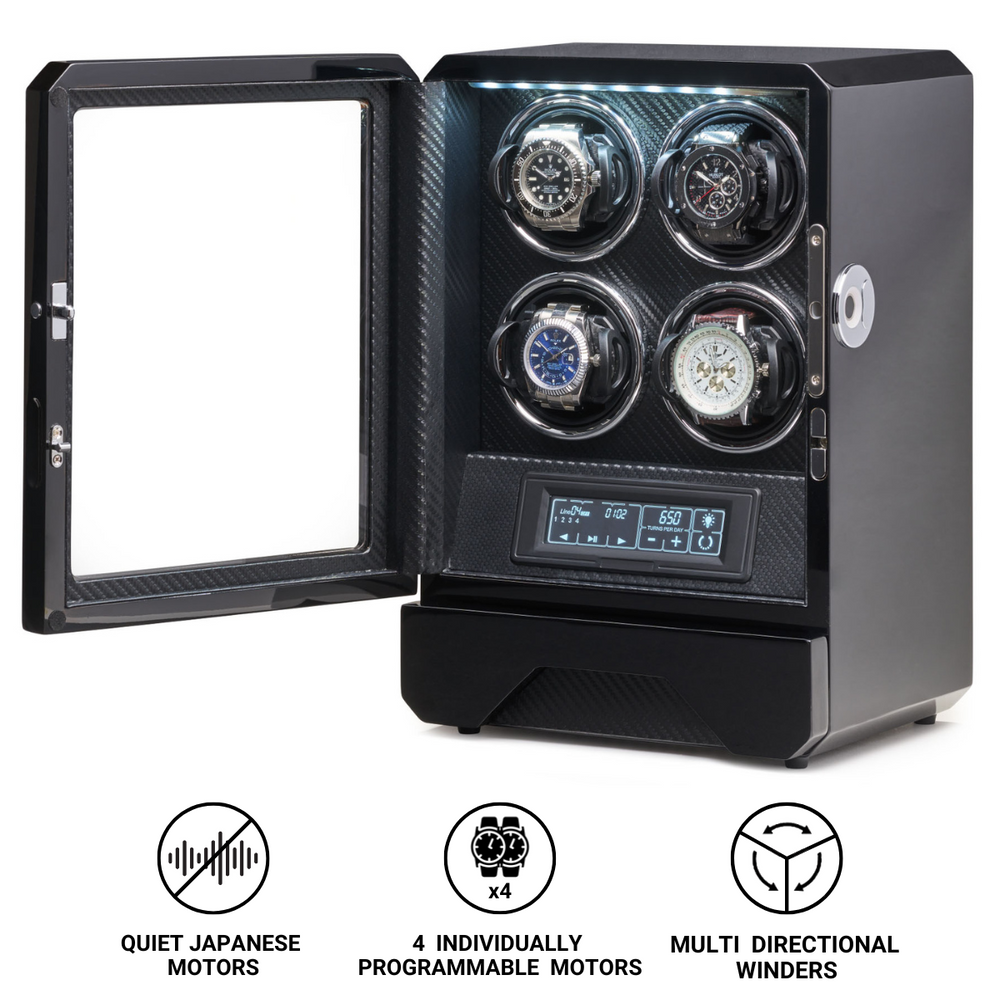What is Crown?
Among the many components that make up a mechanical or quartz watch, few are as vital and immediately recognisable as the crown. This small knob, often located on the side of the case, serves as the physical link between the wearer and the movement within. It allows the user to wind the mainspring, set the time, and, in many watches, control additional functions such as the date, second time zone, or chronograph reset. Despite its modest size, the crown plays an essential role in both functionality and design, balancing practicality with aesthetic identity.
Over more than a century of wristwatch evolution, the crown has become not only a mechanical necessity but also a symbol of precision and craftsmanship. Its design, placement, and operation reflect the character of the watch itself, from utilitarian tool watches to refined dress pieces. Understanding the crown is key to understanding how a mechanical watch operates.
The Origins of the Watch Crown
The crown’s origins can be traced back to the age of pocket watches in the 19th century. Early pocket watches required a separate key to wind the mainspring and set the time. This key, inserted into a small arbor or hole on the case, was both inconvenient and prone to loss. Watchmakers sought a simpler, more reliable solution that would allow the wearer to operate the watch without carrying additional tools.
The solution came in 1842 when French watchmaker Jean-Adrien Philippe, later co-founder of Patek Philippe, developed a keyless winding system. His invention replaced the external winding key with a small knob attached to a stem, which connected directly to the watch’s internal gears. By pulling, turning, or pushing the crown, the wearer could wind the watch or set the time manually. Philippe’s design revolutionised horology, and the modern crown was born.
By the late 19th century, the crown had become a standard feature on pocket watches and, later, on wristwatches. As watches moved from pockets to wrists in the early 20th century, the crown’s function and ergonomics were refined further, adapting to daily use and the demands of modern lifestyles.
The Functions of a Watch Crown
The crown serves as the control mechanism for a watch’s key operations. Though its appearance may vary, its underlying purpose remains universal. In a mechanical watch, the crown is typically used for three primary functions: winding, setting the time, and adjusting additional features.
-
Winding the Watch
In a manual mechanical watch, the crown winds the mainspring, the source of the movement’s energy. Turning the crown in a clockwise direction tightens the coiled spring inside the barrel, storing potential energy that is gradually released to power the watch. Each full turn adds a small amount of tension to the spring until it is fully wound. Over-winding is prevented by a built-in clutch or slipping mechanism.In automatic watches, the crown still serves this function, although the mainspring is usually kept wound by the movement of the rotor. Nonetheless, manual winding via the crown remains useful, especially when the watch has not been worn for some time.
-
Setting the Time
The crown is also used to set the hands of the watch. In most designs, pulling the crown out to its second position disengages the winding mechanism and engages the setting mechanism. Rotating the crown in this position moves the hands forward or backward, allowing precise adjustment of the time. -
Adjusting Additional Functions
On watches with complications, the crown often controls additional settings. A third or fourth crown position may be used to adjust the date, day, or even a second time zone. In more complex watches, the crown can interact with the chronograph or calendar mechanisms, providing a central control system for the movement.
Crown Construction and Components
The crown is a deceptively simple component that conceals remarkable mechanical sophistication. It consists of several interconnected parts that ensure reliable operation and durability.
The main components typically include:
-
Crown Cap: The external portion that the wearer grips. It may be engraved with a brand logo or designed for enhanced grip through fluting, knurling, or texturing.
-
Stem: A slender metal rod that connects the crown to the internal winding and setting mechanisms. The stem transmits rotational and axial motion from the crown to the movement.
-
Gaskets: Small rubber or synthetic seals located inside the crown assembly. These prevent water and dust from entering the watch case, ensuring resistance to environmental factors.
-
Clutch and Sliding Pinion: Mechanical elements that allow the crown to switch between different functions, such as winding and hand-setting, depending on how far it is pulled out.
The precision with which these components interact is crucial. A well-designed crown must operate smoothly and reliably while withstanding years of regular use.
Types of Watch Crowns
The variety of crowns found in modern horology reflects the diversity of watch styles and technical requirements. Each type serves a distinct purpose and offers specific advantages depending on the watch’s design and intended use.
-
Push-Pull Crown
The most common type, found in both dress and everyday watches. The user simply pulls the crown out to access the setting positions and pushes it back in when finished. It provides basic dust and moisture resistance but is not suitable for deep-water use. -
Screw-Down Crown
Designed for water resistance, this crown type features a threaded tube that allows it to screw tightly into the case, forming a secure seal. Screw-down crowns are a hallmark of diving and sports watches, as they prevent water ingress even under high pressure. Brands such as Rolex popularised this system with their Oyster case in the 1920s. -
Onion and Diamond Crowns
These terms describe the shape of the crown. Onion crowns, commonly found on vintage pilot’s and pocket watches, are large and rounded with deep ridges, making them easy to grip even while wearing gloves. Diamond crowns are smaller, tapering shapes often used on elegant dress watches for a refined appearance. -
Recessed and Hidden Crowns
Some modern designs conceal the crown partially or completely within the case, achieving a minimalist look and reducing the risk of accidental damage. Such designs often use integrated pushers or recessed crowns operated with a tool or fingernail. -
Dual or Twin Crowns
Certain watches feature two crowns: one for winding and time-setting, and another for operating additional functions such as an internal rotating bezel or compass. This configuration is typical of field and pilot watches.
Each crown type balances ergonomics, functionality, and design. The choice of crown influences not only how a watch performs but also how it feels and appears on the wrist.
The Crown and Water Resistance
One of the crown’s most important functions in modern watch design is maintaining the watch’s water resistance. The crown is, by necessity, a point of entry into the case, which means it must be carefully sealed to prevent moisture and dust from entering.
In high-quality watches, gaskets are strategically placed around the crown tube and stem. These small rubber or fluoropolymer seals compress when the crown is pushed or screwed in, creating a watertight barrier. In diving watches, screw-down crowns further enhance protection by mechanically sealing the case.
Proper maintenance of the crown is essential to preserve water resistance. Gaskets can degrade over time, and regular servicing ensures that they remain effective. Watchmakers often replace seals during routine maintenance to prevent potential damage from water intrusion.
Crown Design and Aesthetic Significance
While primarily functional, the crown also serves as a key element of a watch’s aesthetic identity. It can dramatically influence the watch’s appearance and comfort, offering both visual balance and tactile engagement.
The crown’s size, shape, and texture are often carefully chosen to complement the watch’s overall design. A large, fluted crown conveys a sense of robustness and practicality, typical of tool watches, while a slim, polished crown enhances the elegance of dress watches.
Many brands also treat the crown as a signature detail. The Rolex coronet, the Omega Greek letter, and Patek Philippe’s Calatrava cross are among the most recognisable symbols in horology, proudly displayed on the crowns of their respective watches. These engravings not only signify authenticity but also connect the crown to the brand’s heritage.
Ergonomics are equally important. A well-designed crown must be easy to grip and manipulate without digging into the wrist. Some brands offset the crown to positions such as 4 o’clock or 8 o’clock to improve comfort, especially on sports watches.
The Crown in Complicated and Modern Watches
In watches with multiple complications, the crown’s role becomes even more complex. Many high-end timepieces incorporate multi-position crowns that control several different functions through carefully engineered gear trains. For instance, a single crown might allow the wearer to adjust the time, set a second time zone, and advance the date, depending on how it is pulled or rotated.
Modern innovations have further expanded the crown’s functionality. Some contemporary watches, especially those with hybrid or electronic movements, feature crowns that double as data-entry devices or scrolling controls. For example, certain smartwatch designs use rotating crowns to navigate menus, maintaining a link between traditional watchmaking and modern technology.
Despite technological progress, the basic mechanical principle of the crown remains unchanged since the 19th century. It remains one of the most enduring and universally understood watch components.
Maintenance and Care of the Crown
Given its central role and constant exposure to handling, the crown requires proper care to ensure long-term performance. Dirt, moisture, and wear can affect its operation over time. Regular cleaning and servicing are essential, especially for watches used in challenging environments.
Users should always ensure that screw-down crowns are fully secured before exposure to water. For manual-wind watches, it is advisable to wind the watch at the same time each day and to stop winding when resistance is felt to avoid excessive pressure on the mainspring. If the crown becomes difficult to turn, loose, or detached, it should be inspected by a professional watchmaker to prevent further damage to the stem or movement.
Conclusion
The crown may be a small and often overlooked part of a watch, but it is the key interface that brings the mechanism to life. From its origins in 19th-century keyless winding systems to its modern iterations with advanced sealing and multifunctional capabilities, the crown embodies the fusion of engineering precision and human interaction.
Every twist and pull of the crown connects the wearer to centuries of horological evolution. It is the point where craftsmanship meets practicality, where the watchmaker’s work is felt directly through the fingertips. Whether found on a rugged diver, an elegant dress watch, or a modern hybrid timepiece, the crown remains one of the most essential and symbolic elements of watch design - a testament to the enduring beauty of mechanical ingenuity.









